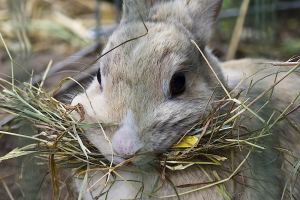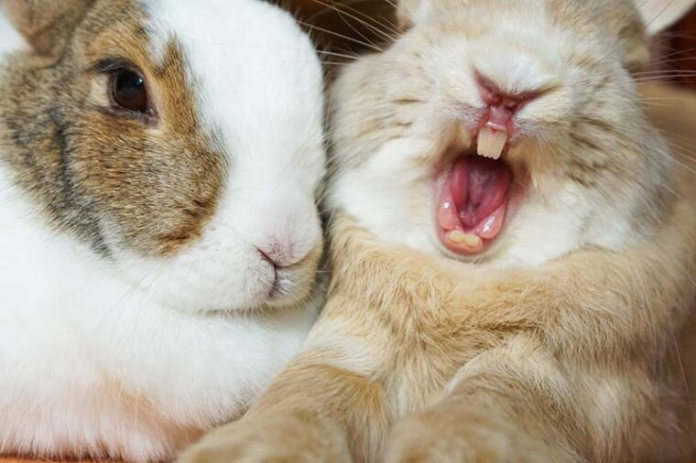How many teeth do a rabbit have
A rabbit typically has 28 teeth. These include four incisors (front teeth), which are prominent and used for cutting and gnawing, and behind them, there are cheek teeth or molars that help in grinding food. Rabbits are known for their continuously growing teeth, so proper dental care and a diet that promotes healthy chewing are essential to prevent dental issues. The four front teeth of a rabbit are the most recognizable. These are the incisors, and they are quite large and prominent. Incisors are used for nibbling, cutting, and grasping food.
Behind the incisors, rabbits have molars that are located towards the back of their mouths. These cheek teeth are designed for grinding down the fibrous plant material that makes up a significant portion of their diet. Regular veterinary check-ups are also recommended to monitor a rabbit’s dental health. If any dental issues are detected, a veterinarian who is experienced with rabbits can provide appropriate treatment, which might include trimming overgrown teeth to ensure the rabbit’s well-being and overall health.
It’s important to note that a rabbit’s teeth can sometimes encounter issues if they are not worn down properly. Inadequate chewing can lead to overgrowth, misalignment, and other dental problems that can affect a rabbit’s ability to eat and be comfortable. Providing the right diet with plenty of roughage and safe objects to chew on can help keep their teeth in good condition. Discover more How Many Rabbits in a Litter? Lets You Know
Rabbit Dental Anatomy: A Closer Look
When we think of a rabbit’s mouth, we often envision those prominent front teeth. These are the rabbit’s incisors, and they are the first set of teeth you’ll notice when observing a rabbit up close. But there’s more to a rabbit’s dental anatomy than just the incisors. In total, a rabbit has 28 teeth, each serving a specific purpose in their complex chewing mechanism.
Incisors: The Frontline Workers
Starting at the front, a rabbit boasts four incisors – two on the upper jaw and two on the lower jaw. These incisors are characterized by their larger size and unique structure. They are essential for tasks like cutting, nibbling, and grasping food. The incisors play a vital role in a rabbit’s ability to process their diet effectively, making them a critical part of their dental makeup. Behind the incisors how many teeth do a rabbit have like the premolars and molars? These cheek teeth are designed for grinding down the fibrous vegetation that constitutes a major portion of a rabbit’s diet.
The Growth Phenomenon
One of the most intriguing aspects of rabbit dentition is the phenomenon of continuous tooth growth. Unlike humans whose teeth have a set size, a rabbit’s teeth never stop growing. This growth is necessary because the natural wear and tear from chewing fibrous plants helps keep their teeth at a functional length. Without this constant growth, a rabbit’s teeth would eventually become too long, causing issues with eating and overall health.

Challenges of Tooth Overgrowth
While continuous growth is an adaptation that benefits rabbits, it can also present challenges. In some cases, a rabbit’s teeth might not wear down adequately due to factors such as diet or genetics. This can lead to overgrown teeth that interfere with their ability to eat. Overgrown teeth might become misaligned, causing discomfort, pain, and even injuries to the rabbit’s mouth.
The Importance of Diet and Chewing
Maintaining proper dental health in rabbits requires a balanced approach. Their diet plays a pivotal role in naturally wearing down their teeth. A diet rich in fibrous hay, fresh vegetables, and safe objects to chew on can help keep their teeth in check. The act of chewing also stimulates the flow of saliva, which aids in the breakdown of food and helps prevent dental issues.
Dental Care and Regular Check-ups
Just like any other aspect of how many teeth do a rabbit have, dental care is crucial. Regular veterinary check-ups are recommended to monitor a rabbit’s dental health. A veterinarian experienced with rabbits can identify any potential dental issues and recommend appropriate treatments. These treatments might include tooth trimming to address overgrowth or misalignment, ensuring the rabbit’s comfort and overall well-being.
Conclusion
In the realm of the animal kingdom, the rabbit’s dental structure stands as a remarkable example of adaptation to dietary needs. With their 28 teeth, including the continuously growing incisors and molars, rabbits are well-equipped to handle their herbivorous diet. Understanding the significance of their dental anatomy and the challenges they might face underscores the importance of responsible pet ownership. By providing the right diet, offering safe objects to chew on, and seeking regular veterinary care, we can ensure that these endearing creatures continue to munch away happily and healthily.
FAQs
- How many teeth does a rabbit have?
A rabbit typically has 28 teeth. This includes four prominent incisors at the front and molars at the back of their mouths.
- What are incisors used for in rabbits?
Incisors are used by rabbits for cutting, nibbling, and grasping food. They play a crucial role in a rabbit’s ability to process its diet.
- Why do rabbit’s teeth keep growing?
Rabbit teeth keep growing throughout their lives due to their diet of fibrous plants. Chewing on these tough materials naturally wears down their teeth, so continuous growth ensures their teeth remain functional.
- What are premolars and molars in rabbits?
Premolars and molars are the cheek teeth of a rabbit located behind the incisors. They are designed for grinding down fibrous vegetation and breaking down food into smaller, digestible pieces.
- How does the overgrowth of teeth affect rabbits?
If a rabbit’s teeth do not wear down properly, they can become overgrown. Overgrown teeth may lead to misalignment, discomfort, pain, and difficulty in eating. Regular dental care is crucial to prevent these issues.




